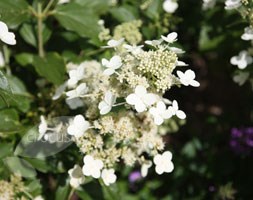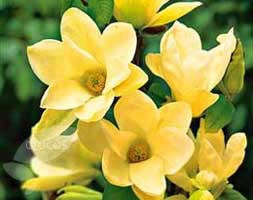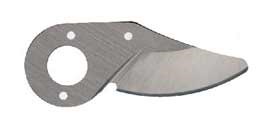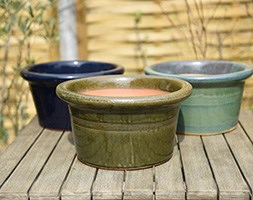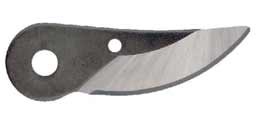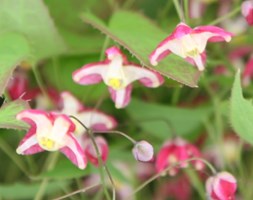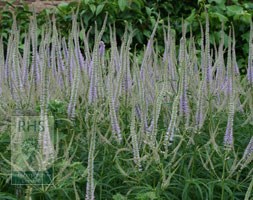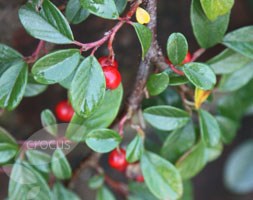New products at Crocus
by Sarah - January 25th, 2015.Filed under: Crocus, New Products.
Crocus just added these new lines
Hydrangea paniculata ‘Kyushu’ (hydrangea) £34.99
Position: full sun or partial shade Soil: moist, well-drained, moderately fertile, humus-rich soil Rate of growth: fast-growing Flowering period: August and September Flower colour: creamy-white Other features: the flower-heads make excellent dried flower arrangements Hardiness: fully hardy Conical clusters of creamy-white flowers from August to September and glossy, toothed, mid to dark green leaves. This vigorous, deciduous hydrangea flourishes in sun or partial shade. Erect in habit it makes an excellent specimen plant for a large shrub or mixed border, sheltered from cold winds. Garden care:To enhance flowering prune hard in early spring, cutting back the previous season’s shoots to within a few buds of the permanent, woody framework of the plant.
Magnolia denudata Yellow River (‘Fei Huang’) (magnolia) £29.99
Position: full sun or partial shade Soil: moist, well-drained, neutral to acidic soil Rate of growth: average Flowering period: April to May Hardiness: fully hardy Large, elegant, creamy-yellow, goblet-shaped flowers open from yellow buds in April and May on bare branches. This magnolia forms a natural dome shape and has spreading, horizontal branches that give it an elegance even when not in flower. This rare variety makes a superb specimen tree for a small garden. It is best grown in fertile, well-drained soil that is slightly acidic. A great tree for a woodland garden where it can be sheltered by other trees – it does not like exposed, windy sites. Magnolias can be a little tricky to grow to begin with but the rewards are well worth it. The main thing is to avoid planting in a frost pocket as this will damage the emerging buds. The same is true for exposed and windy spots. Once established, magnolias are fairly low maintenance though newly planted trees benefit from a good, deep mulch in spring to get them started. Garden care: Requires minimal pruning. Remove any broken, diseased or crossing branches in midsummer. The best time to plant is in April, adding plenty of peat to the planting hole, in a sheltered spot. Mulch in spring with manure and leafmould, especially on dry soils.
Viburnum nudum Brandywine (‘Bulk’) (PBR) (viburnum) £19.99
Position: full sun or partial shade Soil: moderately fertile, moist, well-drained, preferably neutral to slightly acidic soil Rate of growth: average Flowering period: May to June Hardiness: fully hardy An attractive deciduous shrub that has flat-topped clusters of scented flowers in late spring and early summer, and clusters of pink and blue berries in autumn. The berries will usually last well into winter, so offer a long period of interest (provided the birds don’t eat them all!). Easy to grow in most settings, this is a valuable for shrub borders and also makes an interesting, informal hedge. Garden care: Requires minimal pruning. Where necessary remove any misplaced or diseased branches in mid-summer after flowering.
Felco Secateur Spare Blade – To Fit Models No.6/12 £14.99
Genuine Felco Spare parts keep your felco’s in working order. This spare blade fits models numbers 6 and 12.
Glazed pan pot £12.99
This glazed pot is perfect for planting scented plants such as lavender or rosemary and placing around entrances or walkways. They have been designed in the UK and are guaranteed frost proof and come complete with holes for drainage. They come in a variety of colours and look great on the patio or in the conservatory. Measurements: Height: 17cm Diameter: 26cm
Felco Secateur Spare Blade To Fit Model No.5 £12.99
Genuine Felco Spare parts keep your felco’s in working order. This spare blade fits models number 5.
Epimedium x rubrum (bishops hat) £7.99
Position: partial shade Soil: humus-rich, moist, well-drained soil Rate of growth: slow-growing Flowering period: April to May Hardiness: fully hardy Pretty and versatile with distinctive, heart-shaped leaves and a spreading habit, epimediums bring lightness and airiness to a shady border. The young le aves of this variety are bronze-tinted and turn reddish-brown in autumn. In lat e spring a froth of tiny, crimson and pale yellow flowers appear, suspende d on wiry stems. Slow to spread, it makes a good groundcover plant for shady ar eas or under deciduous trees. Garden care: In early spring remove dead and damaged leaves before the flowers appear and apply a thick mulch of compost or well- rotted compost around the crown of the plant. Lift and divide large clumps in autumn.
Veronicastrum virginicum ‘Lavendelturm’ (culver’s root) £5.99
Position: full sun or partial shade Soil: moderately fertile, moist, well-drained soil Rate of growth: average Flowering period: July to September Flower colour: pale lavender Hardiness: fully hardy Long, narrow, tapering spikes of pale lavender flowers from July to September above whorls of deep green leaves. A great plant for creating an impression in the garden towards the end of summer. Best planted towards the back of a sunny or partially shady border in fertile, moist, well-drained soil. Garden care: Divide plants in spring. Apply a generous 5-7cm mulch of well-rotted garden compost or manure around the base of the plant in spring.
Cotoneaster dammeri (cotoneaster) £5.99
Position: full sun or partial shade Soil: moderately fertile, well-drained soil Rate of growth: fast-growing Flowering period: June Hardiness: fully hardy This vigorous, wide spreading, evergreen cotoneaster is one of the best groundcover plants. In June, it is studded with small, white flowers, followed by showy, bright red, autumn berries. It is tolerant of a wide range of conditions including dry soil, and its self-rooting tips soon spread to form a low blanket of weed-suppressing dark green foliage. Garden care: After flowering in late spring or early summer, lightly cut back any branches that spoil the symmetry of the plant and apply a generous 5-7cm (2-3in) mulch of well-rotted garden compost or manure around the base of the plant. In autumn, trim back lightly any branches that obscure the display of fruit.







